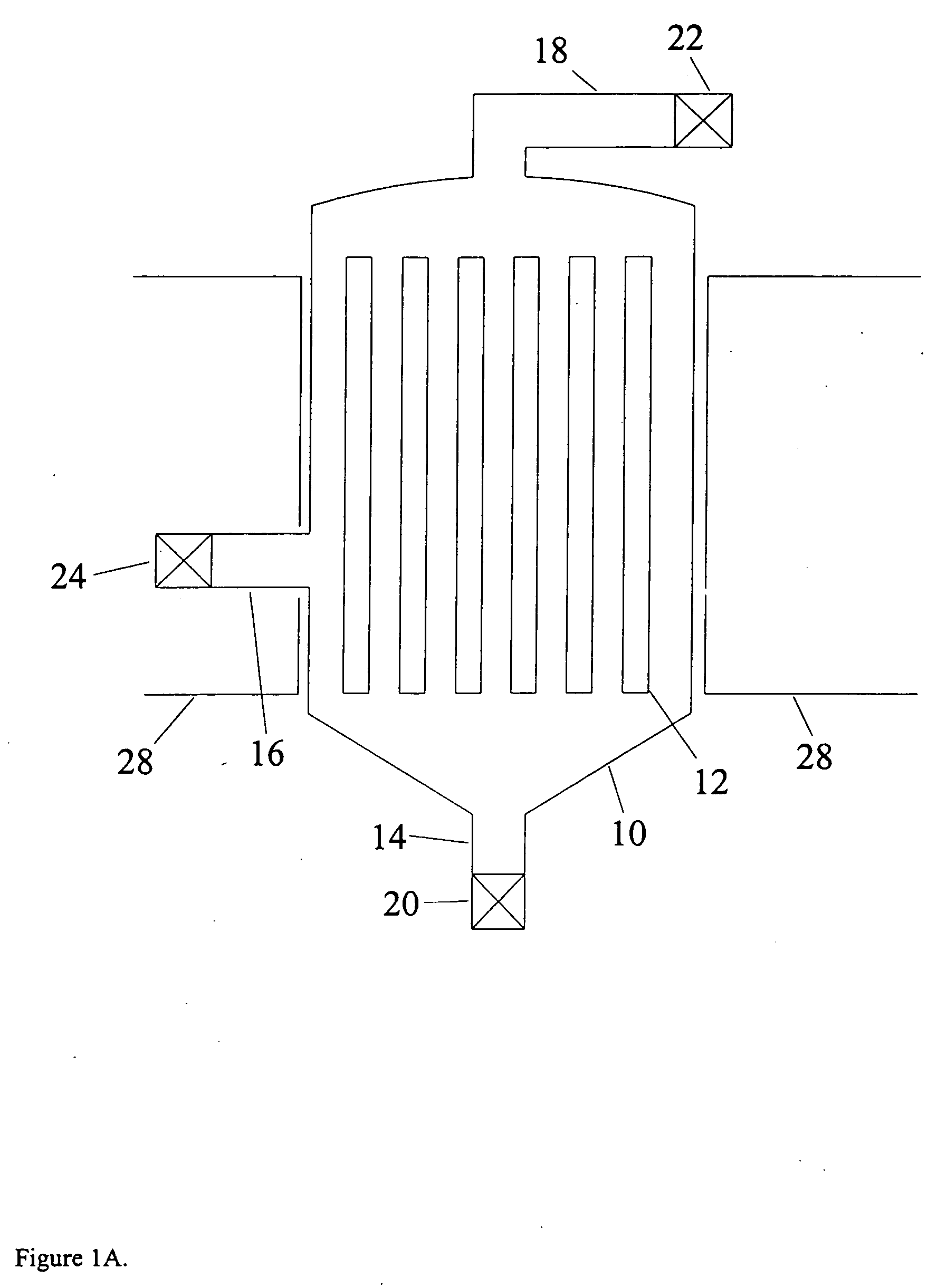Continuous magnetic seperator and process
a magnetic seperator and process technology, applied in the direction of magnetic separation, separation process, filtration separation, etc., can solve the problems of limiting the use of batch filtration process in an otherwise continuous reaction system, and affecting the efficiency of the process
- Summary
- Abstract
- Description
- Claims
- Application Information
AI Technical Summary
Problems solved by technology
Method used
Image
Examples
example 1
Testing of a Continuous Magnetic Separator—Room Temperature Tests on a Continuous Magnetic Separator Using an External Electromagnet
A continuous magnetic separator was tested in the laboratory at conditions chosen to simulate a Fischer-Tropsch reaction slurry. The tests were run with an iron-based catalyst that is a precipitated iron catalyst with a atomic ratio of 100 Fe: 4.4 Si. The catalyst was supplied in the unactivated form. Hexadecane was chosen to be used as an analog liquid for room temperature experiments. The analog was chosen to have a room temperature density and viscosity similar to the F-T waxes at process temperatures. Hexadecane has a density of 0.7733 g / ml, and a viscosity of 3.3 cP, which are very close to the densities (0.625-0.9317 g / ml) and viscosities (2.4-11.9 cP) for F-T waxes reported in the literature (see, Zhou, P. Z., “Status Review of Fischer-Tropsch Slurry Reactor Catalyst / Wax Separation Techniques,” Prepared by Burns and Roe Services Corporation for...
example 2
High Temperature Runs
Tests at 200° C. showed similar results to the room temperature results in Table 1, showing concentrations between about 0.1% and 0.3% catalyst in the clarified liquid for Recycle Ratios between R=5 and R=9 with 4 rods at a feed flow rate of 740 cm3 / min and a magnetic field of 2800 Gauss.
example 3
Separation with Permanent Magnets
A test of permanent magnets was made with a cell containing 4 alnico permanent magnets, 8 inches long and 0.125 inches OD. The catalyst concentration was reduced from 20% to 2% in that test. It is anticipated that substantially lower product concentrations will be achieved for an optimized system, comparable to those obtained with a external magnet.
PUM
| Property | Measurement | Unit |
|---|---|---|
| diameters | aaaaa | aaaaa |
| size | aaaaa | aaaaa |
| size | aaaaa | aaaaa |
Abstract
Description
Claims
Application Information
 Login to View More
Login to View More - R&D
- Intellectual Property
- Life Sciences
- Materials
- Tech Scout
- Unparalleled Data Quality
- Higher Quality Content
- 60% Fewer Hallucinations
Browse by: Latest US Patents, China's latest patents, Technical Efficacy Thesaurus, Application Domain, Technology Topic, Popular Technical Reports.
© 2025 PatSnap. All rights reserved.Legal|Privacy policy|Modern Slavery Act Transparency Statement|Sitemap|About US| Contact US: help@patsnap.com



